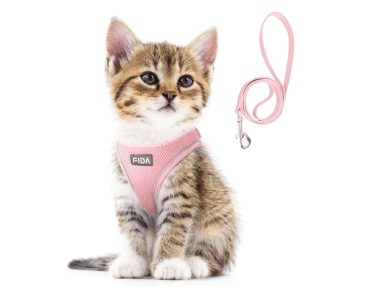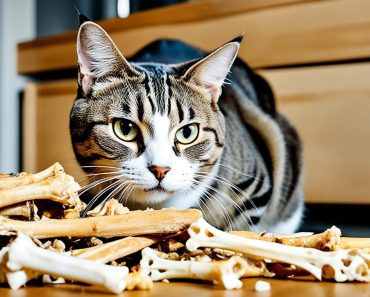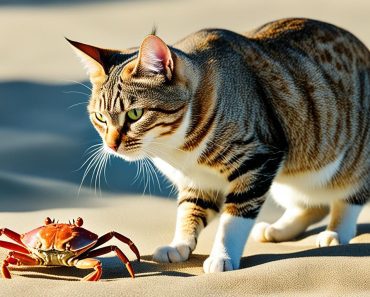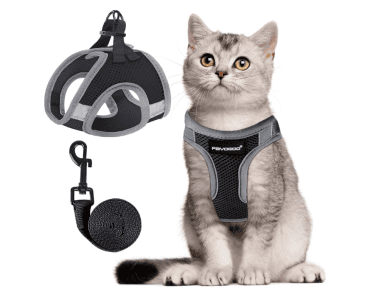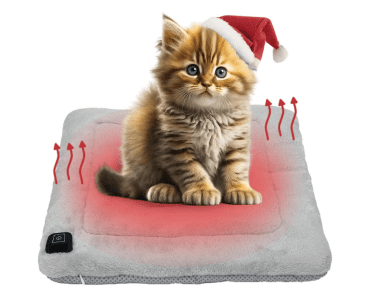As a cat owner, I often wonder what goes on in my furry friend’s mind during sleep. Can cats have nightmares, just like humans? Do they dream about chasing birds or relive their daily adventures? Let’s delve into the fascinating world of feline dreams and discover the truth behind those twitching paws and thumping tails.
Research conducted by Michel Jouvet in the 1960s has shed light on the sleep patterns of cats. Similar to humans, cats enter a dreamland state known as Rapid Eye Movement (REM) sleep. During this stage, cats exhibit behaviors that indicate they are dreaming, such as twitching limbs, rapid breathing, thumping tails, and even vocal noises. It’s intriguing to see how much our feline friends resemble us when it comes to dreams.
Can Cats Have Nightmares? Yes, it is likely possible.
- Cats can have nightmares and dreams like humans, thanks to REM sleep.
- Signs that a cat is dreaming include thumping tails, rapid breathing, and limb twitching.
- Research by Michel Jouvet confirms that cats have dream-related brain activity during REM sleep.
- Cats often dream about hunting, as observed in studies where their brainstem was removed to allow movement during dreams.
- Cats should be allowed to sleep through their dreams and wake up naturally.
How Do We Know Cats Can Dream?
The study conducted by Michel Jouvet in the 1960s provided evidence that cats can dream. This research showed that cats have similar brain activity and muscle relaxation during the REM stage of sleep, which is associated with dreaming in humans. Cats also display twitches, movement of the mouth and paws, and other indications of dreaming during sleep.
To understand if cats can dream, Michel Jouvet conducted groundbreaking research in the 1960s. His study revealed fascinating insights into the sleep patterns of feline companions. Jouvet’s research focused on the REM (Rapid Eye Movement) stage of sleep, which is accompanied by vivid dreaming in humans. During this stage, cats experience similar brain activity and muscle relaxation as humans do when dreaming.
Just like humans, cats also exhibit physical behaviors that suggest they are dreaming. These can include twitching, movement of the mouth and paws, and other signs of dreams during their sleep. By observing these behaviors and correlating them with brain activity, Jouvet’s research confirmed that cats do dream.
It is fascinating to uncover the similarities between human and feline dreaming. This finding highlights the intricate nature of sleep and dreams among different species. The research conducted by Michel Jouvet paved the way for further exploration into cat sleep patterns and has deepened our understanding of their dream states.
Cats have their own unique dream experiences, and it remains a source of curiosity for researchers studying feline sleep. Understanding the dreams of cats not only enhances our knowledge of their sleep behaviors but also strengthens the bond between humans and their feline companions.
Signs Your Cat Is Dreaming
If you have ever wondered whether your cat dreams, there are several signs that can indicate when your feline friend is dreaming.
One of the most common signs is a thumping tail. You may notice your cat’s tail twitching and moving rhythmically while they sleep. This is often a clear indication that they are experiencing a dream.
Rapid breathing is another tell-tale sign of cat dreams. If you observe your cat taking quick, shallow breaths during sleep, it’s likely that they are in the midst of a dream.
Vocal noises can also clue you in on your cat’s dream state. You may hear them meow, chirp, or make other noises while they sleep. These sounds can be quite entertaining and provide insight into the content of their dreams.
Limb twitching is another common sign that your cat is dreaming. You may see their paws or legs moving involuntarily as they sleep. This twitching is often a reflection of the dream activity happening within their mind.
Lastly, keep an eye out for twitching of the face. Your cat’s facial muscles may twitch or move subtly while they are deep in dreamland. This can be a fascinating visual confirmation that they are indeed dreaming.
It’s important to note that when your cat is dreaming, it’s best not to wake them. If disturbed, they may become startled or confused, and their reaction may be aggressive. Allow them to wake up naturally from their dream.
In the next section, we will explore the connection between REM sleep in mammals and cat dreams.
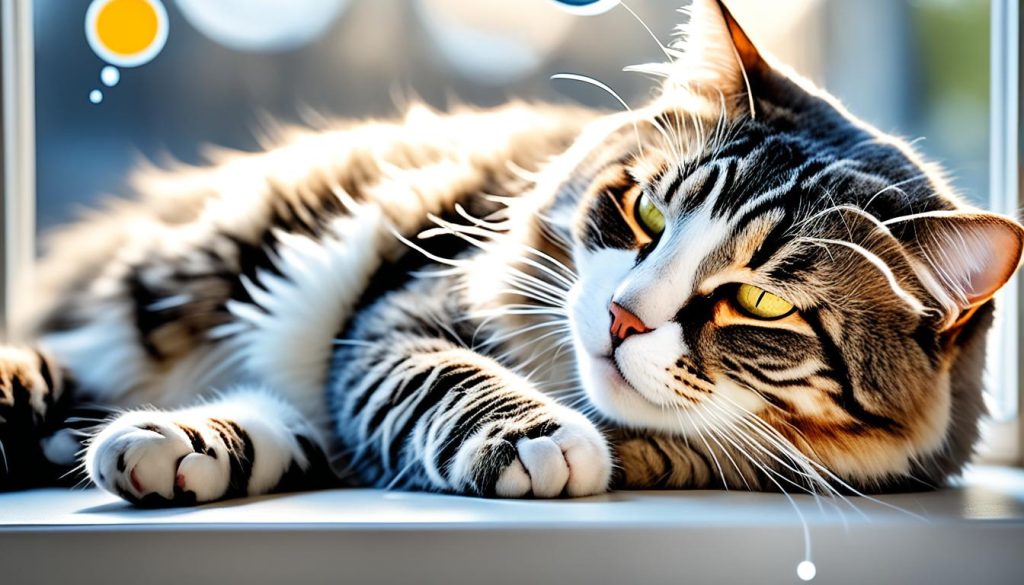
Mammals & REM Sleep
REM sleep, which is associated with dreaming, is observed in all mammals. It is a fascinating phenomenon that occurs during the sleep cycle of various mammalian species, including cats. REM (Rapid Eye Movement) sleep is characterized by rapid eye movements, increased brain activity, and muscle relaxation. It is during this stage that vivid dreams and complex mental processes occur.
Cats, being mammals, naturally experience REM sleep. In fact, they enter REM sleep more easily than humans, spending a significant amount of time in this stage. This suggests that cats are more inclined to dream compared to humans, given the association between REM sleep and dreaming.
Research studies have revealed that cats can dream about various things, including hunting. This observation aligns with their innate predatory instincts and hunting behaviors. During REM sleep, cats may exhibit subtle movements, such as twitching their limbs or facial muscles, which could indicate that they are engaged in dream-like activities.
Overall, the presence of REM sleep in mammals, including cats, highlights the universality of dreaming in the animal kingdom. While we may not fully understand the content and nature of their dreams, the association between REM sleep and dreaming suggests that cats have rich and vivid dream experiences, potentially reflecting their instinctual behaviors and daily experiences.
What Do Cats Dream About?
The content of cat dreams is still not fully understood, but research has shown that cats often dream about hunting. Studies have revealed that cats in a dream state tend to behave as though they are stalking and pouncing on prey. It is possible that cats also dream about experiences they have had throughout the day or in their past, similar to how humans dream.
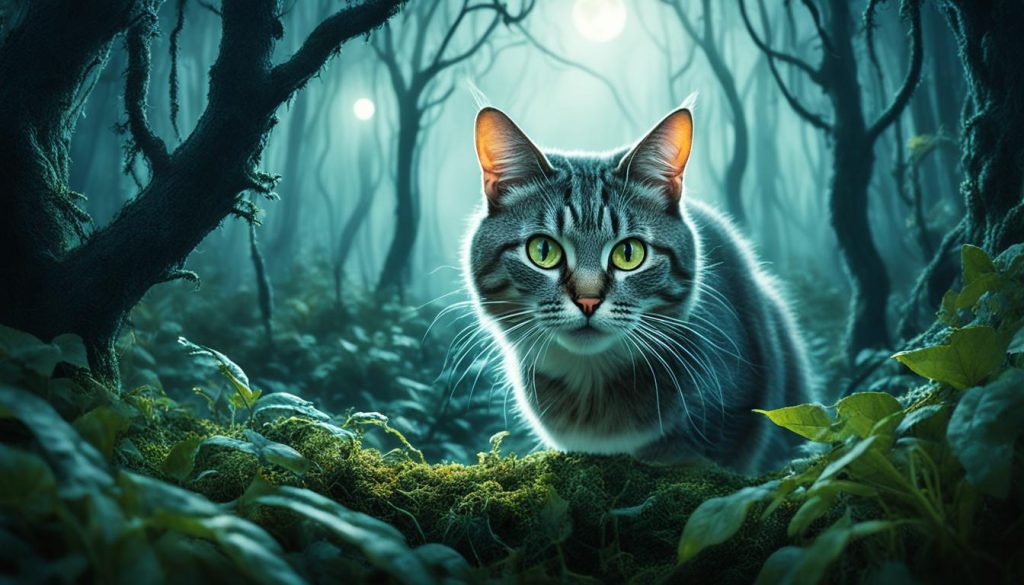
Research on cat dreams is ongoing, aiming to uncover more about the fascinating world of feline dreams. By studying their behavior during sleep and analyzing their brain activity, scientists hope to gain further insights into the content and significance of cat dreams. Understanding cat dreams can provide valuable insights into their emotions, cognitive processes, and overall well-being.
Do Cats Have Bad Dreams?
While there is no definitive answer, anecdotal evidence suggests that cats can indeed have bad dreams or nightmares. Just like humans, cats may wake up with wide eyes and terrified expressions after particularly active dreams, indicating that they may have had a nightmare.
Cats could have nightmares about a variety of things. For example, they may dream about falling, experiencing separation anxiety, or even reliving stressful events. Falling is a common nightmare for both humans and cats, as it is a universal fear.
However, it is important to note that more research is needed to fully understand the nature of cat dreams and nightmares. While anecdotal evidence provides some insights, scientific studies are required to investigate the specific triggers and content of these dreams.
Conclusion
After examining the research on feline dreams and sleep patterns, it is clear that cats can indeed have nightmares and bad dreams, much like humans. During the REM stage of sleep, cats enter a dreamland state that closely resembles the dream state of humans. Signs that your cat is dreaming include a thumping tail, rapid breathing, vocal noises, limb twitching, and twitching of the face.
While cats often dream about hunting, the content of their dreams may also be influenced by their daily experiences, similar to how humans dream. Although it is not confirmed whether cats have nightmares, anecdotal evidence suggests that they can wake up frightened from particularly active dreams.
To ensure a peaceful sleep for your feline companion, it is best to let them sleep through their dreams and wake up naturally. Avoid waking them during their dreams, as they may become startled or confused and can react aggressively. Understanding feline dreams and sleep behaviors is crucial for catering to their sleep needs and ensuring their overall well-being.

